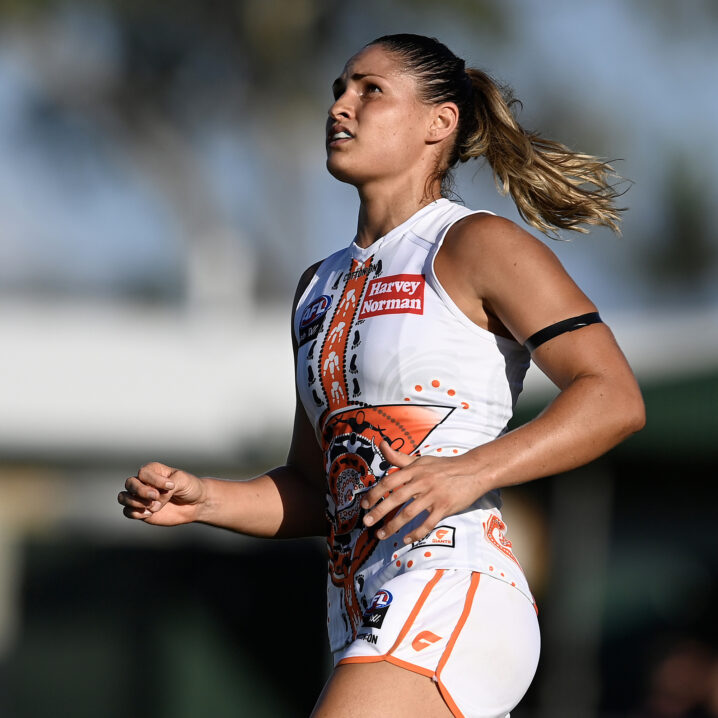
- POPSUGAR Australia
- Fitness
- A Fiery Passion for Footy
A Fiery Passion for Footy


POPSUGAR has partnered with AFLW to celebrate women in sport and their impact beyond the field.
If you ask Lou Stephenson, she’ll probably tell you that the most incredible thing she’s ever done in footy happened right at the start of her career. But the Hawk’s player — who has also forged a profession in firefighting alongside her footy — continues to make her mark, well into her 8th season in the AFLW.
In 2009, the first Youth Girls Football Competition was established in Victoria, in response to legal action launched by Penny Cula-Reid, Emily Stayner, and Helen Taylor. The three schoolgirls challenged the inequity of their ability to participate in footy — and the resulting competition saw 122 girls, aged between 13-18, able to play together in a girls-only league for the first time.
Stephenson, then 14, was one of the 122.
Despite knowing little about footy, Stephenson began her journey at St Damian’s Junior Football Club in Bundoora. She quickly found an affinity for the sport.
“I remember my coach saying, ‘You’re playing in this position’ and showing me on the board where I was — it was centre half-back. I didn’t know anything about football, so I thought I’d just run to the spot on the field. I wasn’t really sure what I was supposed to do,” she laughs. “It was such great fun. I went straight into footy from then on and gave away everything else I was doing at the same time.”
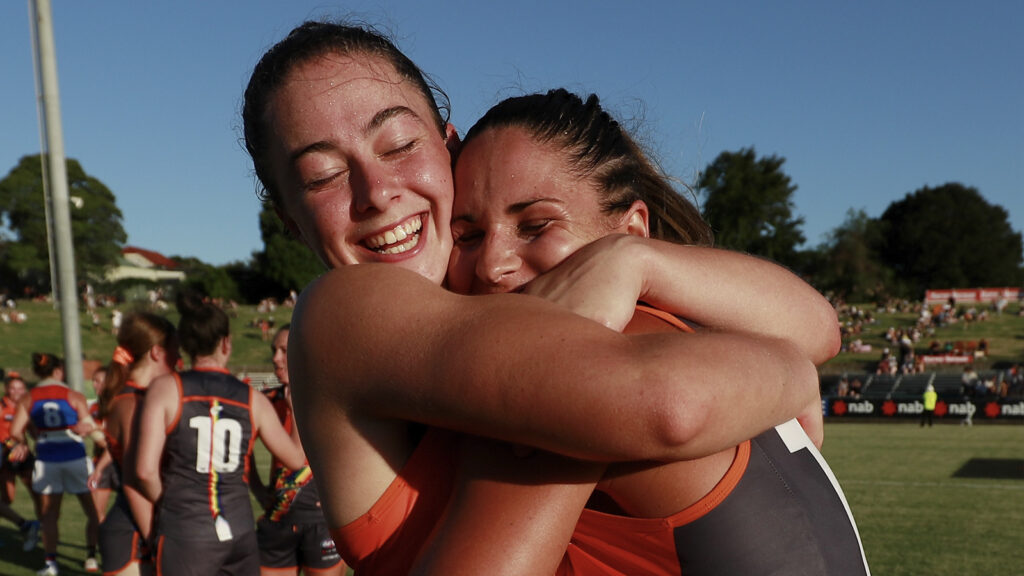
A teenage Stephenson pursued footy with gusto and credits her choice of Melbourne Uni Women’s Football Club as the perfect start to her senior career. Melbourne Uni, known around the grounds as the “Mugars”, has a storied history as one of several powerhouse clubs to feature in the then Victorian Women’s Football League.
“Melbourne Uni was an awesome start to my senior footy. I played for St Damian’s in the Youth Girls competition, and whilst still under 18, I played a handful of games for Melbourne Uni a couple of years in a row before I could actually graduate to senior footy. It was an amazing environment to be a part of,” she said.
Stephenson had some connections to the club prior to joining, but it was Melbourne Uni legend Chyloe Kurdas, who helped to confirm her choice to become a Mugar.
Another early milestone in Stephenson’s senior footy career aligns with one of the most significant moments in Women’s footy history — in 2013, the AFL sanctioned the first Women’s Exhibition Game. 50 of the country’s best female footy players were drafted, 25 to each side, with the match marking the annual Women’s Round celebration of the National competition.
“That was the most incredible thing that I have done in football — probably still to this day. It was such a big moment for me to get drafted as one of the top 50 in the country,” Stephenson said.
En route to the ‘G’, Stephenson recalls her father gently advising the then 18-year-old to manage her expectations for the momentous occasion. “I remember Dad saying to me on the way there — it’s great that we’re going and you’ve put in for this, but I hope you have your expectations pretty low. Because there are so many women who play footy, who are bigger and stronger, older, and more experienced.”
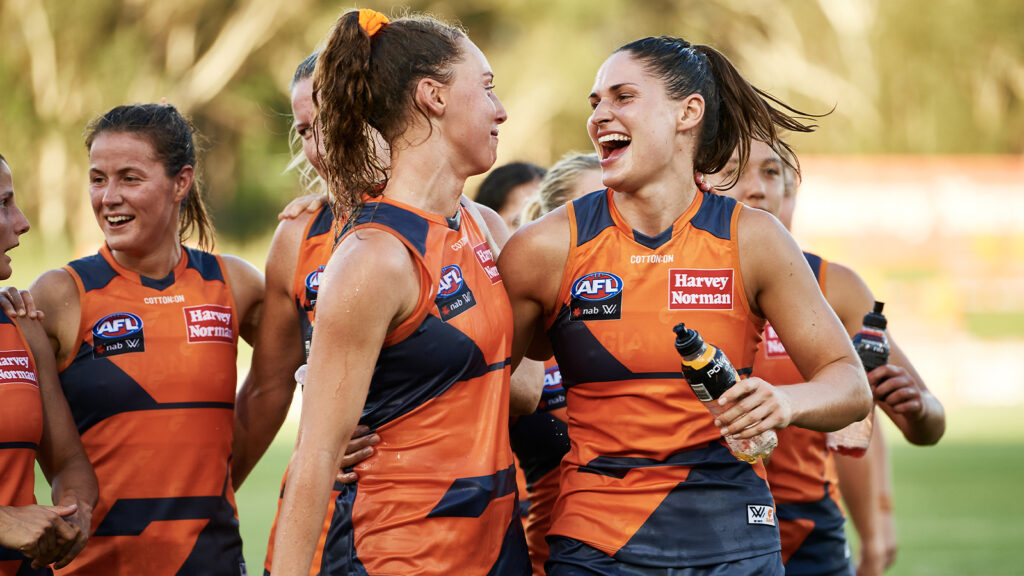
Despite her age, Stephenson was aware of the enormity of the experience ahead of her. She lined up against the likes of Daisy Pearce and Chelsea Randall, who were drafted at 1 and 3 respectively. Melbourne beat the Doggies by 32-points that day — in front of a 7,500 strong crowd — and even with the loss, Stephenson loved it.
At 21 years old, Stephenson moved interstate to build the foundations of the Giant’s women’s football program, along with many others that the club listed from other state football programs. She recalls that time fondly, saying that the situation bonded players, creating a makeshift family away from home.
“It was an incredible experience to be playing in the first season [of footy] — to step out of my comfort zone, be in this brand-new environment and play professional footy,” she said.
After 33 games in the orange for the Giants, and post the pandemic shutdowns of 2021, Stephenson felt the pull to return home to Melbourne. Like most who were separated from loved ones during the challenging time, she wanted to be close to her family and friends and was keen to re-invigorate her football.
“I’d had some challenges at the Giants with my form and with injury — there was a pull to be home with family and friends and have some fresh eyes on me in terms of coaching. I just wanted to give myself the best opportunity to be the best I could be.”
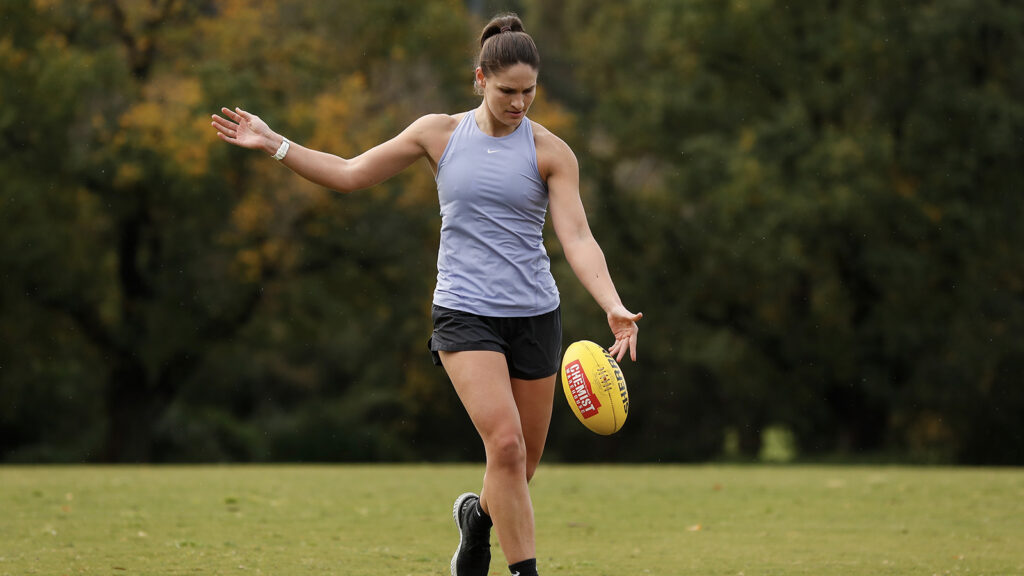
Newly-minted expansion side Hawthorn reached out, eager to secure the experienced defender. Stephenson thought she’d just hear out their proposition, but was quickly swayed by the genuine passion and excitement of those on the call — for Hawthorn, the future and specifically, her role at the club. She felt valued from the outset.
“Starting with a team in its inauguration is a really special place to be. I think I’ve developed as a leader, and I knew I could bring that to Hawthorn and build the culture alongside Bec and the others — that was a really exciting prospect for me.
Whilst Stephenson’s focus on her footy has been near absolute, she also recognises the importance of balancing that with other aspects of her life. During her time on the roster for GWS, Stephenson made the decision that would provide both balance and a challenge — she would apply to become a firefighter with Fire and Rescue NSW.
The application process took nearly 18 months, and Stephenson flags her time at Recruitment College as “the most stressful but amazing time” — connecting her to people outside the footy world and re-framing her perspective on life.
“It puts such great perspective on the things you do as footballers, knowing what we do at work. It broadens your understanding — footy can be stressful, definitely, but it’s actually going to be ok” she laughs.
It’s fortunate that Stephenson sees it in such a light — the juggle of firefighter shift work alongside footy commitments is not for the faint-hearted — particularly after relocating back to Melbourne.
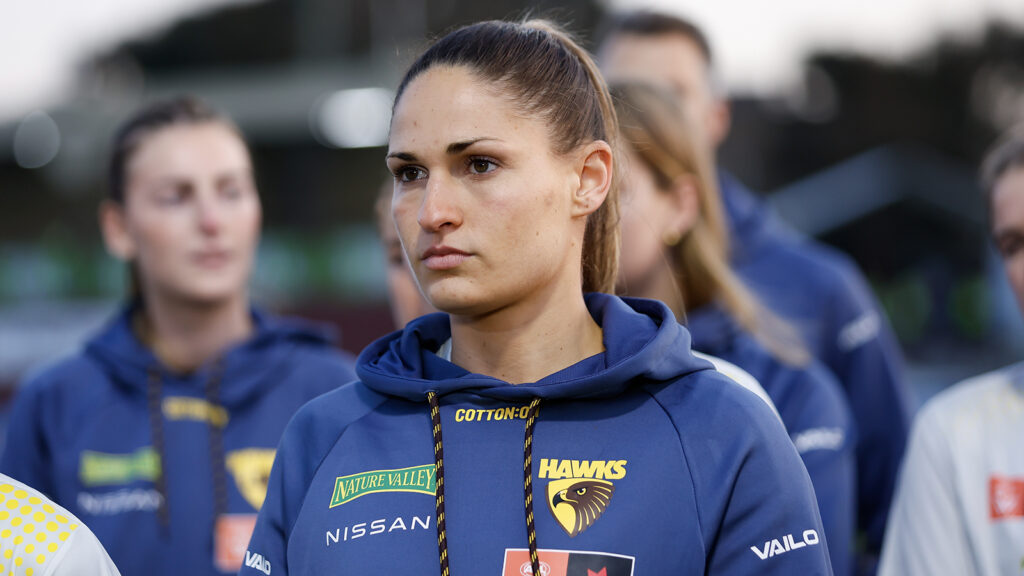
“It’s a 24-hour shift, and we have two in an 8-day cycle — with a day off in between,” she said.
Initially, it was manageable. But the steady increase in the professional standards of AFLW meant that she was at risk of being left behind. The arrangement saw Stephenson sometimes miss one or two training sessions a week, and her sleep and recovery took a hit. That notion triggered significant change for her this year, and saw Stephenson make the decision to take leave without pay to focus fully on her footy commitments. “As a leader and as a player in this very quickly growing game, I decided this year, that that just wasn’t going to cut it anymore. And I did feel like I was missing out on too much personal growth and the growth as a team,” she notes.
“It’s been really incredible to take the leave without pay, and I am really thankful for FRNSW for allowing this to happen, it doesn’t come easy… I’m very lucky they have granted me that,” The renewed focus on footy has allowed Stephenson to capitalise on the time, effort and energy she has to put into her game, and the Hawthorn side as a whole. “It’s made a massive difference. I just feel so much more prepared and confident going into games, knowing that I have done everything I possibly can.”
Making the most of the resources, knowledge, and expertise available, Stephenson hopes to continue to set a benchmark that inspires her peers, now and into the future.
Keep up with Lou on Instagram, and find out more about AFLW games on near you here.

